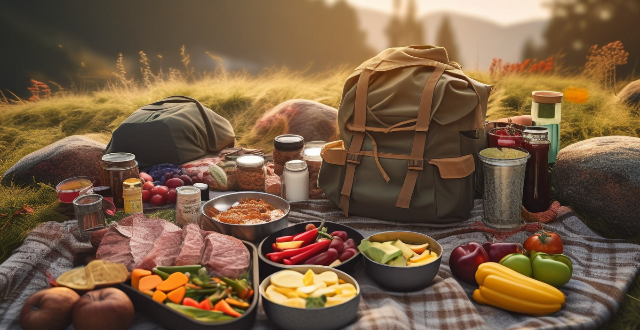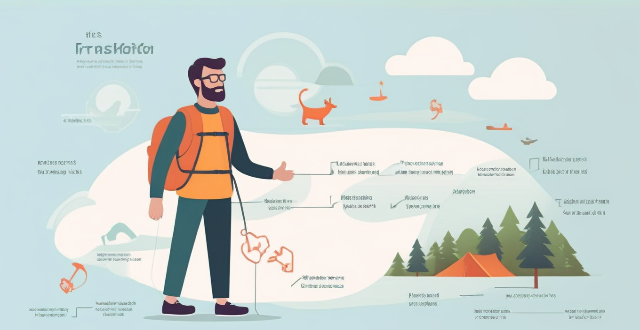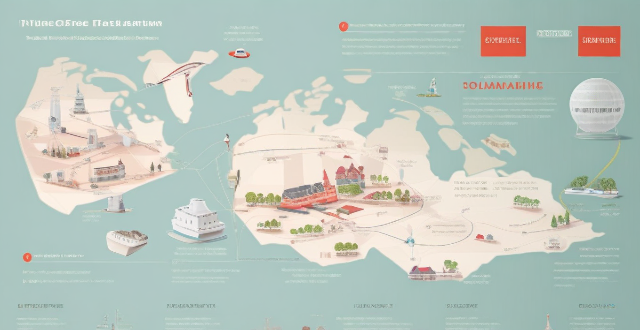Trip Claim

What happens if I need to cancel my trip after purchasing travel insurance ?
If you need to cancel your trip after purchasing travel insurance, review your policy for coverage details and time limitations. Contact your insurer to inform them about the cancellation and provide necessary documentation. File a claim by submitting a claim form with supporting documents. Wait for reimbursement, which may vary in processing time and method. Consider rescheduling instead of cancelling if your policy includes trip interruption coverage. Understand that there might be non-refundable expenses even with coverage. Each policy is different, so review your specific policy details and contact your insurer for tailored guidance.

How do I file a claim with my sports insurance company ?
Filing a claim with your sports insurance company is important to ensure compensation for injuries or damages during sports activities. To file a claim, gather necessary documents, contact the insurance company, fill out the claim form accurately, submit it with supporting documents, and follow up on the claim's progress. Staying organized and persistent can increase chances of receiving deserved compensation.

What documents do I need to file a claim with my travel insurance ?
When filing a claim with your travel insurance, thereWhen filing a claim with your travel insurance, there will need to have on hand These documents are crucial in proving the validity of your claim and ensuring that you receive the compensation you deserve. In this article, we will discuss the various documents required for a travel insurance claim and how to properly submit them. If your travel plans were affected by an unexpected event such as a theft, accident, or natural disaster, you will need to provide a police report or incident report. This document serves as proof that the event occurred and provides details about what happened. Make sure to obtain a copy of the report as soon as possible after the incident occurs. If you fell ill or injured during your trip, you will need to provide medical records and receipts from any treatments or medications you received. These documents should include information about your diagnosis, treatment plan, and any prescriptions you were given. Keep all receipts for medical expenses, including doctor visits, hospital stays, and medication purchases. If your flight was cancelled or delayed due to unforeseen circumstances, you will need to provide documentation from the airline or transportation company. This may include a cancellation notice or delay notice, as well as any correspondence between you and the airline regarding the issue. Be sure to keep all communication related to the cancellation or delay. If any of your belongings were lost or stolen during your trip, you will need to provide documentation of their value and ownership. This may include receipts for purchased items, appraisals for valuable items, or photographs of the lost or stolen property. You should also contact local authorities to file a report and obtain a case number. To prove that you had planned to travel and incurred expenses related to your trip, you will need to provide your travel itinerary and receipts for any pre-paid expenses such as hotels, rental cars, and excursions. Keep all receipts and confirmation emails related to your travel plans. In some cases, you may also need to provide copies of your passport and visa to prove your identity and eligibility to travel. Make sure to keep copies of these documents in a safe place throughout your trip. Once you have gathered all necessary documents, it's time to submit your claim to your travel insurance provider. Follow these steps to ensure a smooth claims process: 1. Review your policy terms and conditions carefully to understand the claims process and any specific requirements or deadlines. 2. Contact your travel insurance provider to initiate the claims process and obtain any necessary forms or instructions. 3. Fill out all required forms accurately and completely, providing detailed information about the incident and supporting documentation. 4. Submit your completed forms and supporting documents to your travel insurance provider according to their instructions. This may involve mailing physical copies or uploading digital copies online. 5. Follow up with your travel insurance provider regularly to check on the status of your claim and address any questions or concerns they may have. By following these steps and providing all necessary documents, you can increase your chances of receiving a successful travel insurance claim and being compensated for any losses or expenses incurred during your trip.

Can I claim a tax refund on online purchases when traveling abroad ?
Can I Claim a Tax Refund on Online Purchases When Traveling Abroad? When traveling abroad, it is possible to claim a tax refund on certain online purchases. However, the process and requirements can vary depending on the country you are visiting and the specific policies of the retailer or e-commerce platform. In this article, we will explore the different factors that can impact your ability to claim a tax refund on online purchases when traveling abroad. Key Factors to Consider: 1. Country-Specific Policies 2. Retailer or E-Commerce Platform Policies 3. Product Type 4. Purchase Amount 5. Timeline Steps to Claim a Tax Refund on Online Purchases: 1. Research Tax Refund Policies 2. Check Product Eligibility 3. Meet Minimum Purchase Requirements 4. Save Receipts and Documentation 5. Fill Out Tax Refund Forms 6. Submit Documentation and Receive Refund

How quickly can I get reimbursed by my travel insurance company ?
The time it takes to get reimbursed by your travel insurance company depends on the type of claim you are filing and the policies of your insurance provider. Emergency medical claims can be processed within a few days to a week, while non-medical claims can take longer depending on the nature of the claim and the required documentation. To expedite the process, it's important to read your policy carefully, keep all receipts and documentation, contact your travel insurance company promptly, submit complete and accurate information, and follow up on your claim if necessary. By following these tips, you can help ensure a smoother and faster reimbursement experience.

Are there any specific items that cannot be included in a tax-free shopping claim ?
Certain items may not qualify for tax exemption in tax-free shopping, including alcohol and tobacco products, perishable food items, medications and prescription drugs, firearms and weapons, and hazardous materials. The specific items that cannot be included in a tax-free shopping claim may vary depending on the country's customs regulations and policies.

How do I plan a backpacking trip on a budget ?
This guide outlines how to plan a budget-friendly backpacking trip by defining a realistic budget, choosing an affordable destination, traveling during off-peak season, opting for budget accommodations, cooking own meals, using public transport, engaging in free activities, packing light, staying connected affordably, and not skimping on trip insurance. It emphasizes the importance of research, flexibility, and openness to new experiences for a memorable adventure without financial strain.

Is it safe to drive at night during a road trip ?
Driving at night during a road trip can be exhilarating but also risky due to reduced visibility and potential for drowsiness. To ensure a safe journey, consider safety precautions such as checking headlights and fog lights, taking breaks every two hours or 100 miles, being extra vigilant in areas with wildlife, maintaining vehicle condition, using technology wisely, being prepared for emergencies, checking weather conditions, obeying legal requirements and regulations, and getting adequate sleep before starting the trip. By following these guidelines, you can help ensure a safer journey under the stars.

What are the best routes for a Canadian road trip ?
Canada is a land of diverse landscapes, from the rugged mountains to the vast coastline. A road trip across this beautiful country can be an unforgettable experience. Here are some of the best routes for a Canadian road trip: - The Trans-Canada Highway (Route 1) - The Cabot Trail, Nova Scotia - Icefields Parkway, Alberta - Dempster Highway, Yukon - Pacific Rim Highway, British Columbia

How long before my trip should I buy travel insurance ?
Travel insurance is a crucial component of any trip, offering coverage for unexpected events such as medical emergencies, trip cancellations, and lost luggage. The best time to buy travel insurance depends on various factors, including the timing of your purchase, trip details, personal situation, and research. Timing matters when buying travel insurance. It's recommended to buy early for peace of mind, better pricing, and more options. However, waiting too long can increase the risk of forgetting, limit options, and create coverage gaps. Trip details such as destination, length of stay, and activities should also be considered. Personal situation factors like health status, financial protection, and travel companions' needs should also influence the timing of your purchase. Practical steps include researching policies, comparing online, reading reviews, consulting a broker, completing an online application, confirming details, and keeping records. Ideally, travel insurance should be purchased at least a few weeks before the trip to ensure adequate coverage and avoid last-minute stressors.

What are the best practices for packing light for a road trip adventure ?
Packing light for a road trip adventure is key to enjoying the journey without being weighed down by excess baggage. Best practices include planning outfits in advance, using packing cubes or compression sacks, rolling clothing instead of folding, sticking to a color scheme, opting for travel-size toiletries, wearing bulkiest items on the plane, and limiting accessories. By following these tips, you can ensure an enjoyable and stress-free road trip adventure.

How can I plan a perfect weekend trip to a nearby city ?
How to plan a perfect weekend trip to a nearby city.

How should I prepare my vehicle for a long-distance road trip ?
Preparing Your Vehicle for a Long-Distance Road Trip A long-distance road trip is an exciting adventure, but it's essential to ensure that your vehicle is in top condition before hitting the open road. Here are some steps you can take to prepare your car for the journey ahead: Check the basics such as tires, fluids, lights, and battery. Perform safety checks on brakes, suspension, belts, and hoses. Make sure your entertainment system and charging ports are working correctly. Consider installing seat covers and using organizers or storage solutions to keep items tidy and accessible during the trip. Don't forget to pack an emergency kit with jumper cables, a flashlight, reflective triangles, and a first aid kit just in case you encounter any issues along the way.

Can I extend my travel insurance coverage if I extend my trip ?
Topic: Extending Travel Insurance Coverage Summary: If you extend your trip, you may need to extend your travel insurance coverage. This depends on your policy's terms and the flexibility of your insurer. To extend coverage, contact your provider, provide details about your extended trip, pay an additional premium, and confirm the extension in writing. Consider timing, potential coverage changes, and alternatives if necessary.

Where can I find recommendations for a coastal road trip in California ?
California's coastline is a treasure trove for road trippers, with stunning views and diverse attractions. Starting points like San Francisco or Los Angeles offer unique experiences, from exploring iconic landmarks to enjoying the laid-back beach culture. Key highways such as Highway 1 and the Pacific Coast Highway provide access to picturesque towns and natural wonders. Northern California highlights include Mendocino's Victorian charm, Big Sur's majestic landscapes, and Monterey's marine life. Central California offers Hearst Castle's grandeur and San Luis Obispo's historic missions. Southern California beckons with Santa Barbara's sophistication and Los Angeles' entertainment hub. Along the way, enjoy hiking, whale watching, kayaking, and visiting wineries. Plan your trip considering timing, accommodations, weather, and vehicle readiness for a smooth journey.

What are the must-have travel packing accessories for a comfortable trip ?
When planning for a trip, packing the right accessories is crucial to ensure comfort and convenience. Essential items include packing cubes, travel pillows, earplugs, portable chargers, water bottles, sunscreen, rain gear, versatile clothing, first aid kits, and compression bags. Each item serves a specific purpose, such as organization, neck support, noise reduction, device charging, hydration, sun protection, rain preparedness, space-saving in luggage, health care, and efficient use of suitcase space. Selecting these accessories based on individual trip needs can greatly enhance the traveling experience.

When should I claim Social Security benefits ?
The text discusses the decision of when to start claiming Social Security benefits. It outlines four factors to consider: age and health; work history; financial situation; and marital status. The text suggests that delaying claiming benefits can increase the monthly benefit amount, but this depends on individual circumstances such as health and financial situation. It emphasizes the importance of careful consideration and consulting with a financial advisor before making any decisions.

How do I choose the right rental car for a road trip ?
When planning a road trip, selecting the right rental car is crucial for comfort, safety, and enjoyment. Here's how to make the best choice: **Consider Your Travel Needs** - Number of Passengers: Determine how many people will be traveling with you. A compact car might suffice for two adults, but a larger group may require an SUV or minivan. - Luggage Space: Think about the amount of luggage you'll have. If you're packing heavily or bringing bulky items like sports equipment, opt for a car with ample trunk space or a hatchback. **Assess the Terrain** - City Driving: If your trip involves mostly city driving, a smaller, fuel-efficient car will be easier to navigate through traffic and park. - Rural or Mountainous Areas: For winding roads and rough terrain, consider a vehicle with better handling and ground clearance, like an SUV or an all-wheel drive vehicle. **Set Your Budget** - Fuel Economy: Check the fuel efficiency ratings of different cars. A more economical car can save you money on gas during your trip. - Rental Rates: Look at the daily or weekly rates for different types of vehicles. Higher-end models and larger vehicles typically cost more to rent. **Check for Features and Add-ons** - GPS and Navigation: Decide if you need in-car navigation. Some rentals come with built-in systems or you might use your smartphone with a mount. - Entertainment: If you'll have children on board, look for rentals that offer rear-seat entertainment systems to keep them occupied. **Safety First** - Safety Ratings: Research the safety ratings of the rental cars you're considering. Choose vehicles with high safety scores to protect you and your passengers. - Emergency Kit: Ensure the rental includes an emergency kit (e.g., spare tire, jack, jumper cables) in case of unforeseen circumstances. **Read Reviews and Ask Questions** - Customer Experience: Read reviews from previous renters to learn about their experiences with specific car models or rental companies. - Insurance Options: Understand the insurance options provided by the rental company and whether it's worth purchasing additional coverage. **Book Early for Best Deals** - Advance Reservations: The earlier you book, the more likely you are to get the car you want at a better rate. - Comparison Shop: Use comparison websites to find the best deals among various rental companies.

What are the most child-friendly hotels or resorts for a family trip ?
When planning a family trip, it's important to choose accommodations that cater to the needs of both adults and children. Some of the most child-friendly hotels or resorts for a family trip include Club Med Resorts, Disney Resorts, Beaches Resorts, Great Wolf Lodge, Aulani, A Disney Resort & Spa, and Four Seasons Resorts. These properties offer amenities such as kid-friendly pools, water parks, supervised clubs, and cultural experiences. When choosing a hotel or resort for your family trip, consider factors such as location, amenities, activities, and overall atmosphere. Look for properties that offer supervised kids' clubs, family-friendly restaurants, and opportunities for both parents and children to relax and have fun together.

What are some common mistakes to avoid when planning a backpacking trip ?
When planning a backpacking trip, it's important to avoid common mistakes that can compromise safety and enjoyment. These include not researching the trail or destination, overestimating your abilities, bringing inadequate gear, packing too much or too little, ignoring weather forecasts, neglecting food and water preparation, traveling solo without a plan, and ignoring Leave No Trace principles. By avoiding these mistakes, you'll be better prepared for a safe and enjoyable backpacking trip. Remember to always prioritize your safety, respect the environment, and have fun exploring the great outdoors!

Are there any apps that help in planning a road trip route with attractions and food stops ?
When planning a road trip, there are several apps available that can assist in route planning, finding attractions, and discovering food stops and restaurants. Google Maps offers turn-by-turn directions, points of interest, and customization options. Roadtrippers helps plan a comprehensive itinerary, suggests interesting places to visit, and offers themed trips. Sygic Travel provides information on top attractions, offline maps, and route optimization. Waze offers real-time traffic updates, community-driven features, and voice commands for safer driving. For food stops and restaurants, Yelp provides restaurant reviews, filtering options, and user photos. OpenTable allows reservations, dining specials, and cuisine type filtering. Zomato offers menu viewing, user ratings, and food photos. TripAdvisor provides traveler reviews, top restaurant listings, and nearby options. Combination apps like TripIt offer itinerary management, attraction and dining suggestions, and integration with other apps. Maps.me provides offline maps, POI categories, and custom routing. RV Trip Wizard plans RV-friendly routes, includes campground information, and lists attractions and restaurants suitable for RVers. TouristEye accesses pre-made guides, creates custom itineraries, and allows collaborative planning. Overall, these apps make it easier than ever to plan the perfect road trip by combining features such as route planning, finding attractions, and discovering food stops and restaurants into one comprehensive tool.
![Are there any travel warnings or advisories that I should be aware of before planning a trip to [insert destination] ?](/imgs/2f8b31ee-f62a-46e3-8828-37a4af062f9b.png)
Are there any travel warnings or advisories that I should be aware of before planning a trip to [insert destination] ?
Before planning a trip to [insert destination], itBefore planning a trip to [insert destination], it of any travel warnings or it is important to be aware of any travel warnings or advisories that may affect your safety and well-being. Here are some steps you can take to ensure a safe and enjoyable trip: 1. Check the government website of the country you plan to visit for an overview of the current situation and any travel warnings or advisories that have been issued. 2. Research local news sources in the destination country to get a better understanding of the current situation and any potential risks. 3. Contact your embassy or consulate directly if you have any specific concerns about traveling to the destination country. 4. Consider purchasing travel insurance to provide coverage for unexpected events such as medical emergencies, trip cancellations, or lost luggage. By following these steps, you can ensure a safe and enjoyable trip while minimizing any potential risks.

What is the best travel insurance for international trips ?
When it comes to choosing the best travel insurance for international trips, there are several factors to consider. Look for a policy that covers medical expenses, trip cancellation/interruption, baggage and personal effects, emergency evacuation and repatriation, travel delay and missed connection, and identity theft protection. Consider the deductibles and limits of each coverage type within the policy. Pay attention to exclusions and limitations such as pre-existing conditions, adventure sports and activities, and geographical limitations. Look for a reputable insurer with excellent customer service ratings and a smooth claims process. Compare prices across different insurers and policies to find one that fits your budget without compromising on essential coverage. By taking into account these key points, you can choose a policy that provides adequate protection and peace of mind for your next adventure abroad.

How do I prepare a travel first aid kit for my next trip ?
When preparing for your next adventure, it's essential to pack a travel first aid kit. This will ensure that you are prepared for any unexpected injuries or illnesses that may occur while away from home. Here are some steps to follow when creating your own travel first aid kit: 1. Choose the right bag or container that is durable, compact, and easy to carry. A waterproof bag with multiple compartments and pockets is ideal as it allows for efficient organization of supplies. 2. Pack essential medical supplies such as bandages, antiseptic wipes, gauze pads, adhesive tape, and scissors. These items are crucial for treating cuts, scrapes, and other minor injuries. Include pain relievers, allergy medication, and motion sickness pills. 3. If taking regular medications, bring enough to last throughout the trip. Over-the-counter drugs like antacids, laxatives, and anti-diarrheal pills should also be packed, along with any prescription medications needed. 4. Depending on the destination and activities planned, specialized items may be necessary. For example, insect repellent, sunscreen, and blister kits are useful for hiking or camping trips. Anti-malarial medication and water purification tablets are important for tropical climates. 5. Customize the travel first aid kit based on individual needs. If allergies or chronic conditions exist, include appropriate medications and supplies. Don't forget to pack a small first aid manual or guidebook for reference in case of an emergency.

What should I do to ensure my personal safety during a backpacking trip ?
Backpacking trips can be an exhilarating adventure, but it's crucial to prioritize personal safety. Here are some essential tips to help you stay safe while enjoying the great outdoors: ## Research and Plan Ahead - **Research the area**: Familiarize yourself with the terrain, weather patterns, and potential hazards of your destination. - **Plan your route**: Create a detailed itinerary and share it with someone who is not accompanying you on the trip. - **Check the forecast**: Keep an eye on the weather and be prepared to adjust your plans accordingly. ## Essential Gear and Equipment - **Pack appropriate gear**: Ensure you have all the necessary equipment, including a tent, sleeping bag, cooking supplies, and navigation tools. - **Wear proper clothing**: Dress in layers and choose fabrics that can handle various weather conditions. - **Carry a first aid kit**: Include items such as bandages, antiseptic wipes, and any prescription medications you might need. ## Stay Informed and Connected - **Bring a map and compass**: Even if you have a GPS device or smartphone, traditional navigation tools can be lifesavers. - **Have a reliable means of communication**: Carry a charged cell phone and consider bringing a satellite phone or emergency beacon for remote areas. - **Know where to find help**: Locate the nearest ranger station, medical facility, or other sources of assistance before you set out. ## Practice Good Trail Etiquette - **Stick to established trails**: Avoid veering off the path to minimize your impact on the environment and reduce the risk of getting lost. - **Respect wildlife**: Maintain a safe distance from animals and never approach them. - **Be aware of other hikers**: Yield appropriately and communicate clearly when passing others on the trail. ## Follow Basic Safety Guidelines - **Hike with a partner**: Having someone with you can significantly increase your safety. - **Avoid hiking at night**: Visibility is limited, and nocturnal creatures are more active after dark. - **Stay hydrated and nourished**: Drink plenty of water and eat regular meals to maintain your energy levels. By following these guidelines, you can enjoy a safe and enjoyable backpacking trip while minimizing risks and being prepared for any situation that may arise. Remember, safety should always be your top priority when venturing into the wilderness.

What are the top luxury island experiences for a honeymoon or anniversary trip ?
Top Luxury Island Experiences for a Honeymoon or Anniversary Trip include Bora Bora in French Polynesia, Santorini in Greece, the Maldives, Mauritius, and Necker Island in the British Virgin Islands. Each destination offers unique experiences such as crystal clear waters, luxury overwater bungalows, sunset cruises, iconic caldera views, private catamaran excursions, indulgent spa treatments, secluded beaches, underwater dining, world-class diving, tropical forests and waterfalls, sailing and watersports, cultural exploration, exclusive private island experiences, world-class facilities, and personalized service. These islands provide the perfect setting for a romantic and adventurous honeymoon or anniversary trip filled with relaxation and unforgettable memories.

How does the claims process work after I've bought insurance ?
After purchasing insurance, understanding the claims process is crucial. The process typically involves documentation and preparation, filing a claim, assessment and investigation, approval or denial, receiving benefits, and considering deductibles/excesses and policy renewal impacts. It's important to gather evidence, notify your insurer, complete a claim form, provide necessary details, review the initial assessment, potentially undergo an investigation, receive approval or denial, arrange for payment, follow up as needed, pay any deductibles/excesses, and be aware of potential premium impacts at renewal. Refer to your policy documents for detailed instructions tailored to your insurance provider's processes.

How can I avoid losing my luggage or dealing with lost baggage claims at the airport ?
Losing your luggage or dealing with lost baggage claims can be a stressful experience, especially when you are traveling for business or pleasure. However, there are several steps you can take to minimize the risk of losing your luggage or dealing with lost baggage claims at the airport. Here are some tips: - Pack light and carry-on only: One of the easiest ways to avoid losing your luggage is to pack light and carry-on only. This way, you don't have to check in any luggage, and you can keep your belongings with you at all times. If you must check in luggage, make sure it is clearly labeled with your name, contact information, and destination address. - Use a luggage tracker: Another way to avoid losing your luggage is to use a luggage tracker. These devices use GPS technology to track your luggage's location in real-time, so you can quickly locate it if it gets lost. Some popular luggage trackers include LugLoc, Trakdot, and AirTags by Apple. - Keep your belongings organized: When packing your luggage, make sure to keep your belongings organized and easily accessible. This way, you can quickly identify any missing items and report them to the airline immediately. It's also a good idea to keep a list of all the items you packed in case you need to file a claim later on. - Check in online: Checking in online before your flight can help you avoid long lines at the airport and reduce the chances of your luggage getting lost. When you check in online, you can print your boarding pass and bag tags at home, which will save you time at the airport. - Choose a reputable airline: Choosing a reputable airline can also help you avoid losing your luggage or dealing with lost baggage claims. Look for airlines that have a good reputation for handling luggage and customer service. You can check online reviews or ask friends and family for recommendations. - File a claim immediately: If your luggage does get lost, make sure to file a claim with the airline immediately. Most airlines have a specific process for filing a claim, so make sure to follow their instructions carefully. Keep all receipts and documentation related to your luggage, including the baggage claim ticket and any communication with the airline. In conclusion, losing your luggage or dealing with lost baggage claims can be a frustrating experience, but there are several steps you can take to minimize the risk. By following these tips, you can enjoy a stress-free travel experience and avoid the hassle of lost luggage claims.

What is a tax refund for shopping ?
The article provides a comprehensive guide on what a tax refund for shopping is, how it works, its benefits, and tips for successful claims. It explains that a tax refund for shopping allows tourists to reclaim some of the Value Added Tax (VAT) they have paid on purchases made during their trip abroad. The process involves keeping receipts, meeting minimum purchase amounts, obtaining tax-free forms, customs declaration, and claiming refunds. The article also highlights the benefits of tax refunds, including savings, additional discounts, and convenience, and offers tips for successful claims such as planning ahead, organizing documents, allowing enough time, and double-checking amounts.

What does a typical travel insurance cover ?
Travel insurance typically covers medical expenses, trip cancellation and interruption, baggage loss and delay, accidental death and dismemberment, and emergency assistance services. Optional extras may include coverage for sports and adventure activities, rental car damage, and travel delay. It's important to consider the specific needs of your trip when selecting a policy and to carefully read the details to understand coverage limits and exclusions.